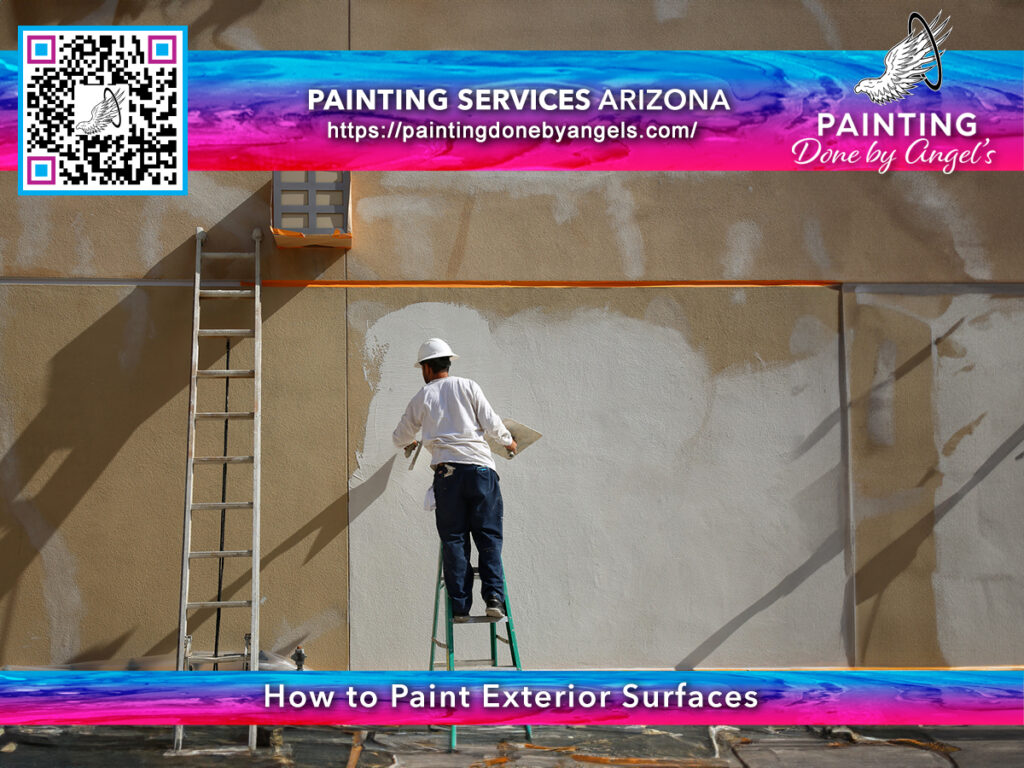
Just like any painting project, focusing on proper techniques for painting exterior surface edges and corners can make all the difference in achieving a professional-looking finish that lasts. Neglecting these areas can lead to peeling, chipping, and overall uneven coverage.
For a flawless result, it is crucial to pay attention to proper preparation, tools, and application methods when painting edges and corners on exterior surfaces. By understanding the best techniques and investing the time and effort into these critical areas, you can ensure a long-lasting and visually appealing paint job that enhances the overall look of your property.
Key Takeaways:
- Preparation is key: Proper surface preparation, including cleaning and priming, is imperative for painting exterior surface edges and corners effectively.
- Use high-quality materials: Invest in high-quality paint and tools to ensure a professional and long-lasting finish on edges and corners.
- Technique matters: Use techniques such as cutting in with a brush and feathering to blend edges smoothly for a seamless look.
- Take your time: Painting edges and corners requires patience and attention to detail to achieve a clean and precise finish.
- Practice makes perfect: Practice your painting skills on a small area before tackling the edges and corners of a larger surface to improve your technique.
Preparing the Exterior Surface for Painting
Little preparation goes a long way when it comes to painting the exterior surface of your home. Ensuring the surface is clean, smooth, and properly primed will not only help the paint adhere better but also make your paint job last longer.
Cleaning and Priming
One of the first steps in preparing the exterior surface for painting is to clean it thoroughly. Use a pressure washer to remove dirt, debris, and loose paint. After cleaning, allow the surface to dry completely before moving on to priming. Primer helps create a smooth and uniform surface for the paint to adhere to, and it also helps seal any existing stains or discoloration.
Addressing Repairs and Imperfections
To ensure a professional-looking finish, it’s important to address any repairs and imperfections on the exterior surface before painting. One common issue is peeling or cracked paint, which should be scraped off and sanded down before applying a new coat. Cracks, holes, and other damage should be filled with an appropriate filler and sanded smooth for a seamless repair.
With proper preparation and attention to detail, you can achieve a beautiful and long-lasting paint job on the exterior surface of your home. By taking the time to clean, prime, and address any repairs, you’ll set yourself up for success and ensure your paint job looks great for years to come.
Selecting the Right Tools for Edges and Corners
There’s no denying that choosing the right tools for painting exterior surface edges and corners is crucial for a professional finish. Any painting enthusiast knows that the debate between brushes and rollers is a long-standing one. Concerning painting edges and corners, however, brushes are often the preferred tool. Brushes offer greater precision and control, allowing you to easily navigate tight spaces and create sharp, crisp lines. Rollers, on the other hand, are more suited for larger surface areas.
Specialty Tools for Precision Work
There’s a wide range of specialty tools designed specifically for precision work when painting edges and corners. Precision tools, such as angled brushes, detail sponges, and edging pads, can help you tackle intricate areas with ease and accuracy. These tools are particularly useful for achieving clean lines and seamless transitions between different surface textures.
This extra level of precision can make all the difference in achieving a professional-looking paint job that stands out for all the right reasons. When used in combination with high-quality paint and proper technique, specialty tools for precision work can elevate the overall appearance of your exterior surfaces. It’s worth investing in these tools to ensure that your edges and corners are painted to perfection.
Techniques for Painting Straight Edges
Taping for a Clean Line
On all exterior painting projects, achieving clean and straight edges is crucial for a professional finish. One effective technique for achieving crisp lines is taping off the edges before painting. Use high-quality painter’s tape and apply it along the edge to be painted, pressing it down firmly to create a seal. Make sure the tape is straight and securely adhered to prevent bleeding of paint underneath.
Freehand Painting with a Steady Hand
Clean, straight edges can also be achieved through freehand painting with a steady hand. This technique requires a steady hand and a high level of precision. To master freehand painting, it is necessary to practice control and consistency in your brush strokes. With practice, you can develop the skills needed to paint straight edges confidently without the use of tape.
To ensure success with freehand painting, maintain a steady hand and a consistent brush pressure throughout the stroke. This technique may require more practice and skill compared to taping, but it allows for greater flexibility and speed in painting straight edges. Take a look at this impressive piece – How To Achieve Professional-Looking Results When Painting Your Interior Walls.
Mastering Corners and Tight Spaces
Angled Brush Technique
Tight angles and corners can be tricky to paint, but with the right technique, you can achieve professional results. When tackling corners and edges, using an angled brush is necessary. The angled shape allows you to easily reach into tight spaces and create clean, crisp lines. To master this technique, load your brush with a moderate amount of paint and gently drag it along the corner or edge, applying steady pressure for a consistent line.
Using a Corner Roller for Efficiency
Any professional painter knows that time is money, which is why using a corner roller can greatly improve your efficiency when painting edges and corners. These specialized rollers are designed to fit snugly into corners and tight spaces, allowing you to cover more surface area in less time. Using a corner roller also reduces the risk of drips and splatters, ensuring a clean and professional finish.
When using a corner roller, make sure to apply even pressure to avoid uneven coverage. Additionally, keep a steady hand and work in small sections to maintain control over the roller. With a bit of practice, you’ll be able to paint corners and edges with ease and precision.
Order of Work for Effective Edge Painting
Painting Edges Before Large Surfaces
Order is crucial when painting exterior surface edges and corners. Start by carefully painting the edges before moving on to the larger surfaces. This technique allows for more precision and control over the edges, ensuring a clean and seamless finish. By focusing on the edges first, you can avoid drips and overlaps onto adjacent surfaces, saving time and effort in the long run.
Blending Edges with the Rest of the Surface
Painting the edges is just the beginning. Blending them with the rest of the surface is equally important for a professional-looking paint job. Take your time to feather out the edges where the paint ends, gently merging them with the larger surfaces. This technique creates a seamless transition between the edge and the rest of the surface, resulting in a cohesive and polished appearance.
Blending the edges with the rest of the surface requires a steady hand and attention to detail. Use a quality paintbrush or angled brush to carefully blend the edges, ensuring a smooth and consistent finish. Pay close attention to lighting conditions as well, as shadows can highlight imperfections in the blending process. Taking the time to properly blend the edges will elevate the overall look of your exterior painting project. Explore further about Why Complementary Colors Matter When Choosing The Right Paint For Your Home.
Preventing Paint Bleeds and Drips
Proper Technique to Avoid Common Pitfalls
For a flawless exterior paint job, it is crucial to prevent paint bleeds and drips along edges and corners. One common pitfall is using too much paint on the brush or roller, which can lead to excess paint pooling and dripping. To avoid this, make sure to remove any excess paint by lightly tapping the brush or roller against the edge of the paint can or tray.
The key to preventing paint bleeds is to use painter’s tape effectively. Ensure that the tape is securely pressed down along the edges, creating a tight seal to block paint from seeping underneath. Additionally, painting in a slow and controlled manner will help you maintain precision and avoid drips along the surfaces.
Correcting Mistakes and Touch-Ups
On occasion, mistakes such as paint bleeds or drips may occur despite your best efforts. When this happens, it is important to address them promptly to maintain the quality of your exterior paint job. Correcting mistakes and touch-ups can be done by carefully scraping off the excess paint with a putty knife or sanding the drips lightly with fine-grit sandpaper.
This helps create a smooth surface for repainting. It is important to match the paint color and finish precisely for touch-ups to blend seamlessly with the existing paint. Pay attention to any overlapping layers to ensure a seamless transition between the touch-up area and the rest of the surface.
Maintenance and Longevity of Painted Edges
Protective Coatings and Sealants
After meticulously painting the edges and corners of your exterior surfaces, it is crucial to consider the longevity of your work. The application of protective coatings and sealants can significantly extend the life of your paint job. These products create an additional barrier against moisture, UV rays, and other environmental factors that can deteriorate the paint over time.
Periodic Inspection and Touch-Up Tips
After completing the painting of exterior edges and corners, it is important to implement a regular maintenance routine to ensure the longevity of your work. Periodic inspection of painted surfaces allows you to identify any signs of wear, peeling, or damage early on. This proactive approach enables you to address any issues promptly before they escalate and require a complete repaint.
- Inspect painted edges and corners at least twice a year.
- Look for any signs of peeling, cracking, or discoloration.
- Address any issues immediately to prevent further damage.
This regular maintenance will not only preserve the appearance of your exterior surfaces but also protect them from costly repairs in the long run.
To wrap up
On the whole, achieving a professional finish when painting exterior surface edges and corners requires a combination of the right tools, techniques, and attention to detail. By using quality brushes, painter’s tape, and carefully cutting in with precision, you can ensure a clean and crisp edge that enhances the overall look of your paint job. It’s vital to work carefully and patiently, taking the time to properly prepare the surface and apply multiple coats as needed to achieve the desired coverage and durability. By following these best practices, you can achieve professional-looking results and protect your home from the elements for years to come.
Painting Done by Angel’s helps people who have lived in the Scottsdale & Phoenix, Arizona regions to make their homes and businesses more beautiful. We are dedicated to providing high-quality exterior and interior painting services. We have 15+ years of expertise in this area. We are a family-owned & operated company that is fully insured, bonded, and licensed so that your investment is safe with us; We strive to provide the best outcomes for our customers every time!
FAQ
Q: Why is it important to pay attention to painting exterior surface edges and corners?
A: Painting exterior surface edges and corners is vital because these areas are more prone to wear and tear due to exposure to elements such as sunlight, rain, and snow. Properly painting these areas can help protect the surfaces from damage and extend the lifespan of the paint job.
Q: What are the best techniques for painting exterior surface edges and corners?
A: When painting exterior surface edges and corners, it is important to use techniques that ensure thorough coverage and a seamless finish. Some of the best techniques include using a high-quality angled brush for precision, applying painter’s tape to protect adjacent surfaces, and taking your time to paint carefully and evenly.
Q: How can I ensure a professional-looking paint job on exterior surface edges and corners?
A: To achieve a professional-looking paint job on exterior surface edges and corners, it is imperative to properly prepare the surfaces by cleaning and priming them before painting. Additionally, using high-quality paint and tools, such as brushes and rollers designed for precision work, can help you achieve a smooth and flawless finish.


